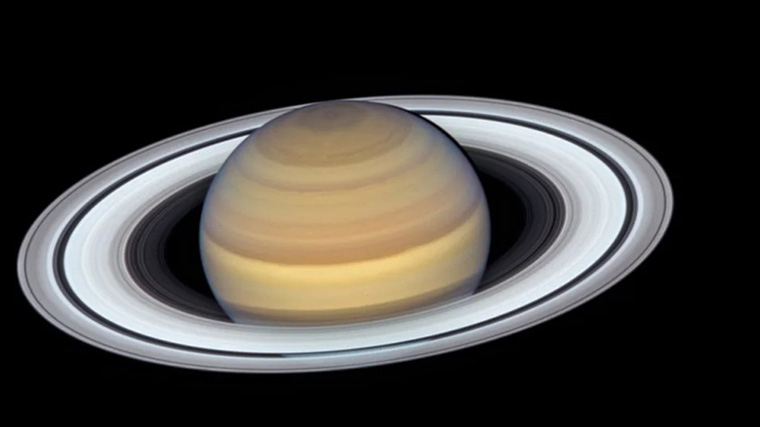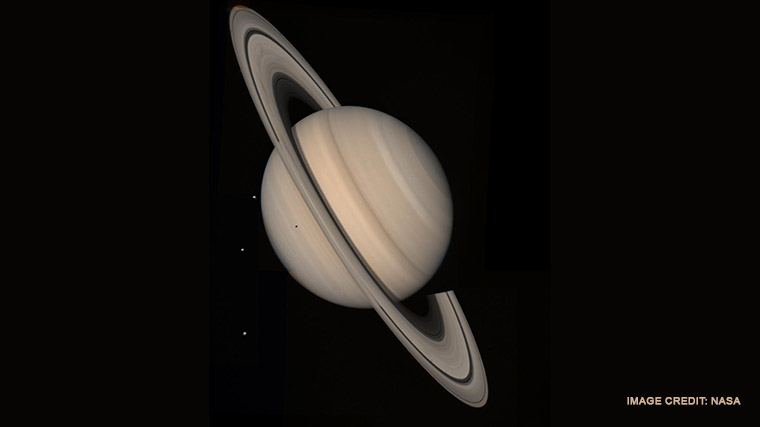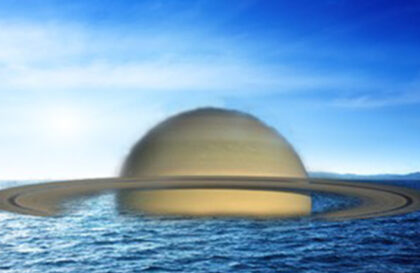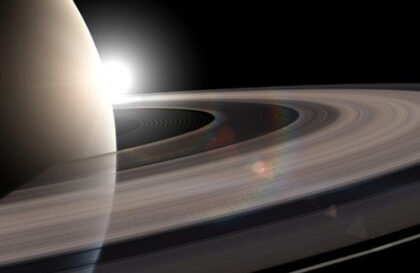Rings of Saturn. What is this?
The radius of the rings of Saturn is 480 thousand km
The effect of their high reflectivity is due to the presence of superconducting cosmic ice. In the microwave range of observation, as recorded by the Pioneer interplanetary station and confirmed by the Voyager expeditions, the rings exhibit a high reflectivity, which is caused by the presence of a significant number of metallic inclusions in the structure of the rings.
Most scientists are inclined to the theory that the particles of the rings are relics of the early stages of the formation of the solar system. These particles, which have not undergone the processes of heating and merging, retain their structure from the time when the planets only began to evolve from protoplanetary disks.
In the presence of a magnetic field near the protoplanet, superconducting ice particles exhibit ideal diamagnetism, which causes their equatorial movement around the planet.
This movement is subject to magnetic levitation, which occurs due to the expulsion of the superconductor from the magnetic field. This effect, discovered in 1933, gained particular relevance after the discovery of high-temperature superconductivity for superconducting ceramics in 1986. Magnetic levitation experiments showing pieces of a ceramic superconductor hovering in the Earth’s magnetic field are visually impressive.
A clear structure of thin rings (the thickness of Saturn’s rings is only 9.5 meters) is formed due to the properties of an ideal diamagnet, which is superconducting ice. Superconducting ice is organized into separate rings, alternating with rarefaction zones.
Rings are available in different colors. The variety of color shades of the rings is explained by the chemical composition and structure of the particles. The balance of gravity, centrifugal force, and levitation force for each particle can vary depending on its chemical composition. As a consequence, different particles can be in orbits with different radii, forming multi-colored rings or groups of rings.
The detection of “spokes” in the ring structure is of particular interest. These structures, resembling wheel spokes in shape and consisting of micron and submicron particles, rotate almost synchronously with Saturn’s magnetosphere. The spokes measure 6,200 miles (10,000 km) long and 620 miles (1,000 km) wide.
Space ice?
Space ice is the one that is grown at minus 100 0C and aged for at least 3 years. Such ice has the property of superconductivity.
It is believed that such ice can be grown if water is cooled to minus 100 degrees Celsius and kept at this temperature for three or more years. The theory suggests that space ice is microscopic particles of ice that can form snow hundreds of times more fluffy than grown on Earth because at ultra-low temperatures the particles specially interact with each other without sticking together.
By the way, the diameter of a snowball molded from the rings of Saturn would be only 370 miles (600 km). And if we assume that the ice particles of the rings have superconducting properties (the phenomenon was discovered in 1986 by the Soviet scientist N.A. Babushkina), numerous experimental data on the nature of Saturn’s rings begin to take shape in a single, consistent picture.
Credit рhoto:
https://edition.cnn.com
https://cbaileyfilm.artstation.com



